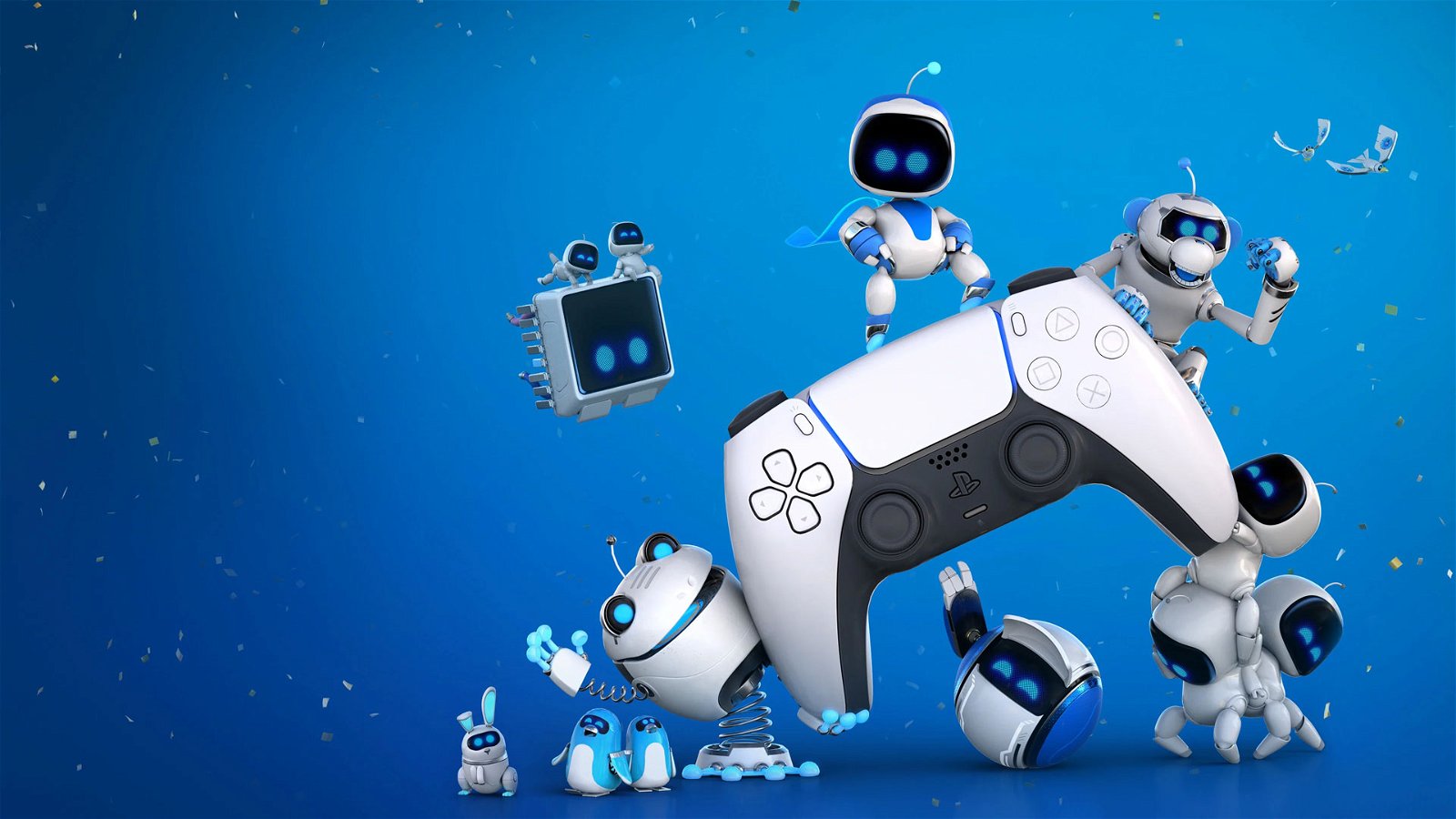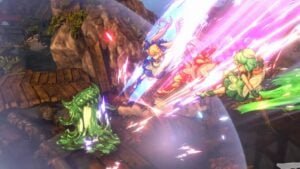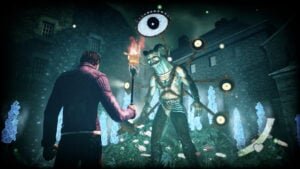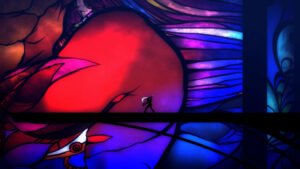The PlayStation 5 is now here, bringing with it a new feeling of possibilities, and innovation. The new design, power, and especially the DualSense controller are filled with potential for game development. It provides new ways for players to interact and immerse themselves in the gaming experience. This new potential is exemplified by Astro’s Playroom, the new game from Team ASOBI and the digital pack in game everyone can experience.
Taking each new feature available in the PlayStation 5 and presenting it in a fun, exciting way, Astro’s Playroom is a showcase of what is possible on Sony’s new console. With this in mind, CGMagazine took some time to talk to Nicolas Doucet from the Team ASOBI, to talk about the PlayStation 5 and how it feels to be one of the first games players enjoy.
CGMagazine: How did Astro’s Playroom get started and how did the overall concept of the game get fleshed out to where it is now?
Nicolas Doucet: The way it started is that with every new console we create, there’s obviously a lot of engineering happening over at the headquarters of PlayStation. And because we are based in Japan, and we have a history of working with the mechanical engineers at Sony. So whenever there is a design or a new feature for the next controller, we are one of the first teams to actually get our hands on prototypes. And so, we’ve been developing this relationship of just getting technology early, developing some game applications, and then feeding that back into the mechanical design. So, it’s a really nice iterative loop.
And through that process we came across a lot of good findings that actually also helped the mechanical engineers with feature improvements. Since they don’t always understand or envision everything that can be done with that technology, they come from a different angle. And so, at the end of all, we had about 80 tech demos. And these demos can be very simple. For example, they can go from archery where you’re just using the adaptive trigger ― you might be firing an arrow and just getting a sense of the tension. And perhaps another demo might be walking on those surfaces.
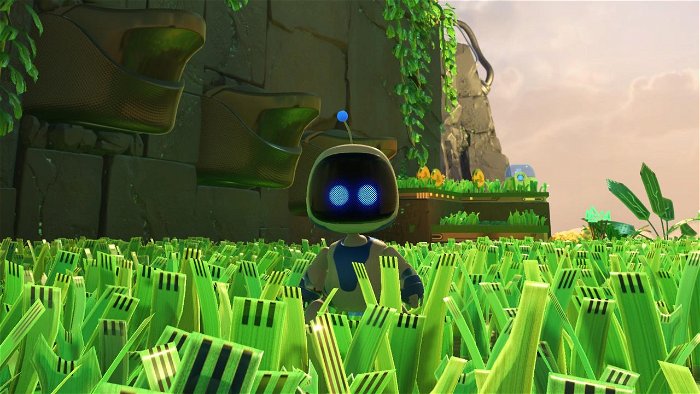
They’re very small and not focused on graphics, but more on the experience. And once we had all of what normally the classic thing would have been to first, there was a decision: do we make another Playroom game? Because that wasn’t our first time. In fact, we had made one for PlayStation 4 and we had made one for PlayStation VR. We actually jumped on it because it’s such a privilege to be able to put your game inside the console at day one and have all users potentially use it as a gateway inside that new PlayStation 5 experience.
It’s such a great privilege that we just jumped on it. And I would say that the only unusual turn that we took is that normally when you have so many of these tech demos, the easiest and most straightforward way to put them to the user would be to do a collection of mini games, because that’s very simple and also it means that if things are disconnected or different look and feel, it doesn’t matter ― you can just surprise them in some mini games. But we didn’t want to do that. We wanted to challenge ourselves by creating one cohesive experience.
And since we were on the back — and in fact, this project started just as we were finishing our previous game, Astrobot Rescue Mission. Actually, in production on that VR title the research started for this game. So, it made sense to continue building on the platform genre we love and to try to put on all of these demos, all of these technical experiments we’ve done and make a cohesive experience, which ended up being Astro’s Playroom.
CGMagazine: How did you ensure gameplay could show off the new PS5 tech while also being fun to explore, fun to play, and never feel too much as a gimmick?
Nicolas: Well, thank you for saying that because that’s obviously the big test. Have we achieved that or not? So, we consider every moment, we call them happy haptic moments. You could say they’re individual demos in effect, but we consider them over a timeline. So, how often should people feel these little moments and how often should a big moment come? And in a way it’s not very dissimilar to what you have in movies or what you have in music or what you have in games where you have these big Epic moments and then it comes down and calms you down, and then you have another one.
We’ve been trying to pace the experience so that it was over time ― these moments would happen at key timings. But it also was about picking the right time, or should I say, the right balance. The thing with haptic feedback is that, particularly, the adaptive trigger was an easier one because they’re more specific moments. So, when you enter the adaptive trigger gameplay, it is all really focused, but there is haptic feedback happening throughout the whole experience. There’s haptic feedback for your steps, there’s haptic feedback for whether, there is haptic feedback when you pick up coins ― it’s just everywhere.
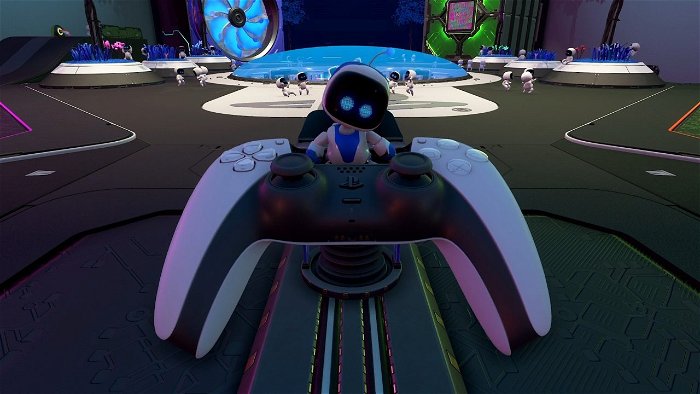
One of the tricks was to be measured and give priority to some effects over others. So, let me give you an example. Let’s imagine that you’re running on the grass and at the same time, there’s also a very strong rain, and the massive enemy is walking or coming at you. At this moment in time you have three particular expressions of haptics, you have the grass, you have the wind or the rain, and then you have this big stomping feeling. And each one of those in isolation is actually a very clear expression and you could probably judge what it is with your eyes closed. However, if you mix them all together at the same level, it just becomes a little of a mishmash and it’s just hard to differentiate what is what. So, what we’ve had to do is set priorities. We’d have to decide, okay, in this particular instance I’m making it up, but that would have been the big enemy’s stomping, which would have probably been the biggest one and being directly linked to the live and die gameplay, we would have probably made that the top priority.
“There’s quite a few updates to Astro from the PSVR version to this…”
Once you defeat that enemy, maybe that focus would have gone on to the wind, which is probably a bigger point of focus than perhaps the grass. By doing that we’ve been actually cross fading every haptic effect. So, not everything always plays at the same intensity, but the point is that from an inclusion point of view, the user is feeling all of these things blending in a good way.
CGMagazine: As a team, was that a lot of pressure to make sure it hit every mark since it will be on all PS5 owners systems? Or was it more of an opportunity to just expand and show what the system can do, but also you as a studio can do?
Nicolas: I think it’s both actually. Actually, there was an element of being preloaded is almost a way to experiment, which is good ― it’s a positive drive. But at the same time there is also a big responsibility because it’s an experience that needs to resonate with tech lovers at launch, gamers later down the line taking several years, it needs to still be relevant for perhaps a family or younger players. And so, there are many things also. Especially we touched the brand this time a lot with all these collectibles and the history of PlayStation that we’re depicting through this funny experience that offers several jokes and tributes. So, all of that was of course an important way to carry the idea forward, but I think it’s such a privilege. I think the privilege part really outweighed the pressure.

CGMagazine: I do want to quickly just touch on the animations used in the game and just the subtle yet dynamic way they all kind of look or move. How did you manage to achieve that? And did you go far enough to create that cute animated vibe that we do see in the final product?
Nicolas: There’s quite a few updates to Astro from the PSVR version to this, and it’s subtle, but we did often think, “okay, people are going to be stopping the camera and moving around and looking at details” and of course it’s going to be in 4k and it’s going to be on that glorious TV. So, actually, there’s been a lot of updates that are kind of, perhaps, screenshot to screenshots. It’s kind of stuff that you may not notice, but actually if they were taken away perhaps you would feel something’s missing, like the led under the eyes, the visor was kind of replaced to have actual LEDs underneath and then kind of course the whole geometry and all the details.
But I think probably it comes down to the rounded and shininess of him. So, you have metal, plastic and of course the glass. And these materials are essentially the same kind of materials you find in the products I was talking about earlier. So, these are very simple in fact, but they kind of have an inherent elegance to them, and that’s really all it needs to be charming, I think. Then it comes down to how rounded the curves are. On PS1 it would have been like a hexagon, and then now it’s really, really rounded. And of course, the lighting system was also very important because the way light reflects on the visor and all the parts. And the animation we’ve continued to refine at every step.
What’s also really important with this kind of game, and we’ve carried that perhaps from the previous game too, is that everything needs to be reactive. If we’re talking here about having a kind of flat cartoon and fun game, but actually one of the elements that is perhaps a little subliminal is that it’s also a toy in the sense that everything that you approach reacts. So, if it’s a bit of grass, it pushes and moves, and if you punch the tree, the tree will shake and you get a haptic feedback of the shake, and all of this was built into every single character and object in the game. So, as well as being a game with a goal and you progress, it’s actually also a toy box, and this is something that I think it’s not necessarily just for this particular game, but it’s something we put in every one of our games.

CGMagazine: What is the future for Astro, and do you see diving more into this franchise as the time goes forward?
Nicolas: I mean we can’t really talk about official plans yet, but to a large extent, just to give an honest answer, I think it comes down to the appeal and what the stories and feedback that we have back after these games. Being pre-installed means we’re going to be touching a lot of people, and I think it’s going to be really interesting to see if this character actually has appeal. So far it seems to be having, but I think overtime we need to really get a lot of feedback and just decide our next move.
CGMagazine: Anything else you want to add as people are getting their PS5, turning them on for the first time and diving into Astro’s Playroom?
Nicolas: We talked a little about the PlayStation history, so if that something that people — that’s something on the side that — I say it’s on the side, but in fact there’s a lot of it. There are hundreds and hundreds of references to the PlayStation universe. So, if you’re a PlayStation fan, I think look out for the artifacts, lookout for the games, look out for the references, all the details, there are tons and tons of things. But of course, the star of the show for the game is the DualSense controller. And so, really at the same time we don’t want to ask too much to look at this and look at that, because the magic should just operate by itself. But particularly the adaptive trigger, I think, and the haptic feedback ― it’s something that is really a game changer.
It’s going to evolve, and I really look forward to seeing what we’ll be doing with haptic feedback a few years down the line. And I’m hoping that we’d be looking at all current implementations in Astro’s Playroom and think, “wow, that was cool, but we’ve done much better”. So, that’s the, for me, the demonstration of the DualSense is probably the highlight to me.
To read the full interview, check out CGMagazine Issue #40.
